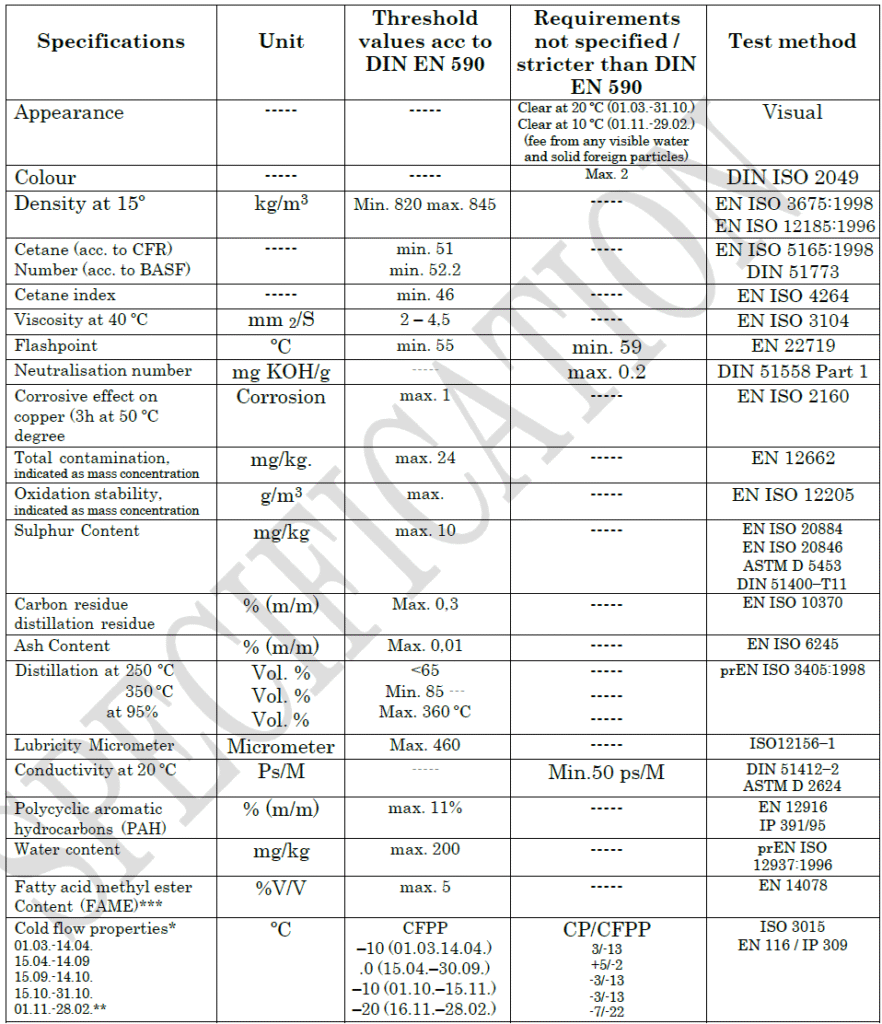EN590 was introduced to coincide with the development of new emissions standards across the European Union. The overall goal has been to reduce the sulphur content of diesel fuel. Sulphur had been used as a lubricant in the fuel; its role is now taken by special additives in ULSD.
Since 2007, diesel that conforms to EN590 has been referred to as Ultra Low Sulphur Diesel (ULSD) in the European Union. The phrase “Ultra Low Sulphur Diesel” is governed by different standards in other parts of the world.
EN590 describes the physical properties that all automotive diesel fuel must meet if it is to be sold in the European Union, Croatia, Iceland, Norway, and Switzerland.
EN 590 was introduced alongside the European emission standards. With each revision, EN 590 has been adapted to lower the sulphur content of diesel fuel. Since 2007, this fuel is referred to as Ultra Low Sulphur Diesel (ULSD), as the former function of sulphur as a lubricant is absent and must be replaced by additives.
The quality of European diesel fuels is specified by the EN 590 standard. While these specifications are not mandatory, they are observed by all fuel suppliers in Europe.
Automobile diesel EN 590 is intended for use in diesel engines. Diesel motor fuel quality meets the requirements of the European Standard EN 590. For operation in temperate climates, the following grades of EN 590 diesel fuel are offered:
- Grade C – limiting filterability temperature: -5°C
- Grade D – limiting filterability temperature: -10°C
- Grade E – limiting filterability temperature: -15°C
- Grade F – limiting filterability temperature: -20°C
The entire volume of produced diesel fuel meets the requirements for Euro 4 and Euro 5 vehicles. The low sulfur content in EN 590 diesel reduces emissions of sulfur oxides into the atmosphere, which is especially important for inhabitants of big cities.



